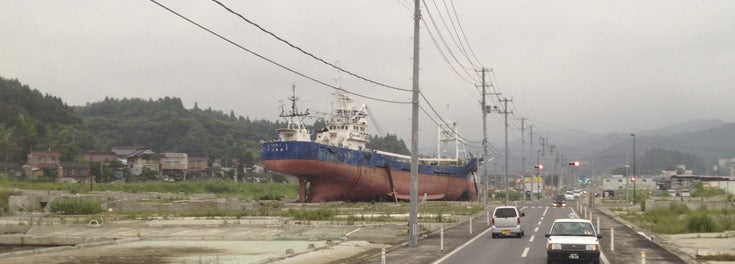
Where better to work on a class project about helping communities in Japan recover from the 2011 earthquake and tsunami than, well, Japan? A group of URI students and faculty spent 10 days last month in Iwate Prefecture, Japan as part of an interdisciplinary three-credit course we’re offering in partnership with the University of Tokyo.
This class is just one of many ways that URI students and researchers study tsunamis and their aftermath. URI also plays a crucial role in coastal disaster preparedness and recovery around the globe.
Taught by professors from the departments of History, Marine Affairs, and Natural Resource Economics, the course is designed to give students an international perspective on coastal management issues. Our students worked side-by-side with Japanese students, and we hope to alternate locations with Japanese students in future years. For most of them, it was a life-changing experience.
“So many aspects of it were so very powerful,” said Travis Roberts, whose group project was to study how collective memory of disasters helps communities prepare for future disasters. “Walking through one area and seeing all the shrines, I didn’t realize the level of destruction that happened. One man said to me, ‘don’t let the people in the U.S. forget. Tell everyone about it.’ That really stuck with me.”
The class is just one of many ways that URI students and researchers study tsunamis and their aftermath. URI also plays a crucial role in coastal disaster preparedness and recovery around the globe through work conducted by our Coastal Resources Center at the Graduate School of Oceanography. Following the Indian Ocean tsunami of 2004, staff at the Center trained coastal managers in 12 developing nations on the best practices for sustainable coastal development, natural resource management, and appropriate policy making. They also conducted an impact assessment in Thailand immediately following the tsunami and developed demonstration projects in the region for rebuilding livelihoods for residents in the tsunami’s path.
Ocean Engineering Professor Stephan Grilli is one of the world’s leading experts on the science of tsunamis, especially those that occur as a result of underwater landslides. He led the first scientific research expedition to the epicenter of the Indian Ocean tsunami, which was featured in a Discovery Channel documentary, and he’s regularly interviewed by national and international media about tsunamis and the global tsunami warning systems. Grilli and his students use the 100-foot long wave tank at the Narragansett Bay Campus to simulate tsunamis and rogue waves to better understand their dynamics so coastal communities can be better prepared to withstand them. Grilli, his students, and colleagues have recently published a series of papers on the modeling of the March 11, 2011 Tohoku-oku tsunami
These are just of some of the ways our students are meeting the world’s changing needs.
